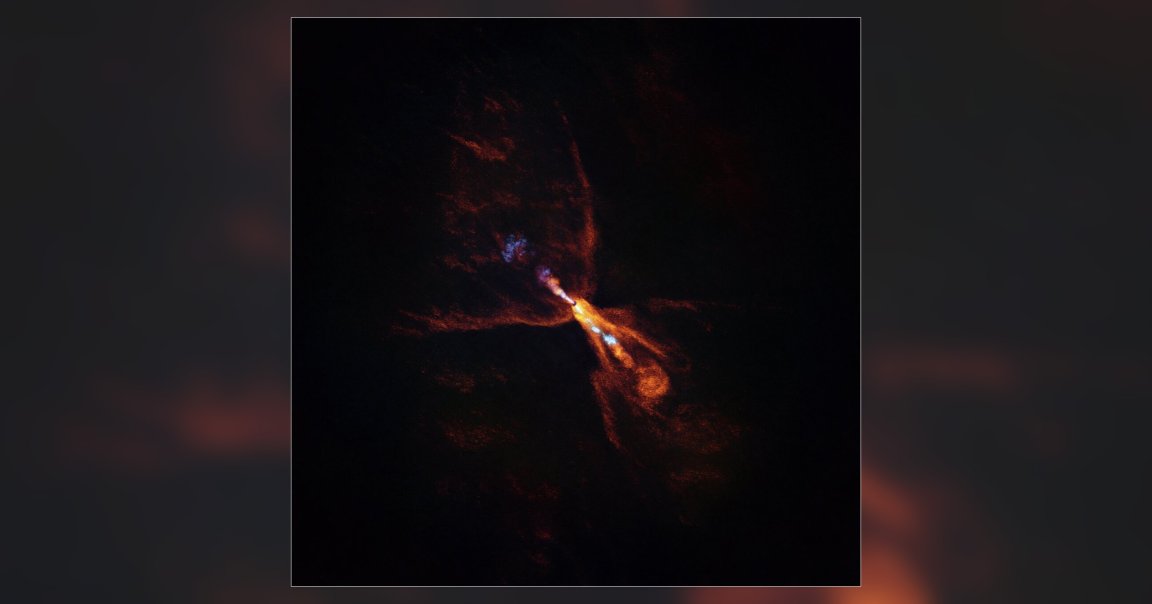
Astronomers have spotted a planetary system being conceived from the swirl of gas and dust surrounding a star — giving us an unprecedented, real-time look at how our solar system would’ve formed some 4.6 billion years ago.
The findings, published as a study in the journal Nature, are the first time we’re seeing such an early stage of planets being formed anywhere in the cosmos.
“We’ve captured a direct glimpse of the hot region where rocky planets like Earth are born around young protostars,” lead author Melissa McClure at the Leiden Observatory told the Associated Press. “For the first time, we can conclusively say that the first steps of planet formation are happening right now.”
Inchoate planetary systems have been spotted before — but they were further along in their development. Instead, what’s been captured here, using the James Webb Telescope and the ALMA telescope in Chile, is roughly the equivalent of an organism’s first cells being formed.
The baby star, or protostar, orchestrating the system’s birth is HOPS-315, a G-type star like our Sun — though much younger — located some 1,370 light years away in the constellation Orion.
HOPS-315 is surrounded by a hot, rotating circumstellar envelope of gas and dust called a protoplanetary disk. There, the astronomers spotted reservoirs of matter condensing together to form solid mineral grains. Over millions of years, the mineral grains will cool off and coalesce to form larger planetesimals, which serve as building blocks of a nascent planet — either going straight to being a rocky planet like Earth, or the solid core of a giant planet like Jupiter or Uranus.
Crucially, the building materials the astronomers detected were silicon monoxide gas and crystalline silicate minerals, which are believed to have played a major role in our own system’s birth.
“This process has never been seen before in a protoplanetary disk — or anywhere outside our solar system,” co-author Edwin Bergin, a professor at the University of Michigan, said in a statement about the work.
Per the AP, the solid formation is taking place in a location equivalent to the asteroid belt in our own star system between Mars and Jupiter, where the leftover materials of our system’s planet forming years can still be found. Asteroids are ancient planetesimals that never got a chance to make it big, still harboring stores of silicon monoxide and crystalline silicate that astronomers have dated to estimate the timeline of the solar system’s formation.
The silicon monoxode and crystalline silicate were first spotted by the James Webb, indicating the presence of a protoplanetary disk. But the data wasn’t clear enough to determine the exact location they were originating around the star. Fortuitously, Nature noted, the disk was oriented in a way that allowed astronomers to see it unobstructed by HOPS-315’s outflow, a highly energetic jet of material that fell onto the star before being blasted into space.
Outflows tend to overpower the infrared spectrum that astronomers favor to inspect dense regions like a protoplanetary disk. Thanks to the disk’s orientation, though, the ALMA telescope was able to pinpoint the mineral signal’s origins to a location about 2.2 astronomical units away from the star, or about 2.2 times the distance between the Earth and the Sun.
“We’re really seeing these minerals at the same location in this extrasolar system as where we see them in asteroids in the Solar System,” co-author Logan Francis, a researcher at Leiden University, said in the statement.
Many aspects of our solar system’s origins remain a mystery, and astronomers can’t confidently say how unique its formation is. Can we use it as a blueprint for how planetary systems form throughout the cosmos, or are we a relative oddity? HOPS-315 suggests we have at least a handful of peers. To know for sure, we’ll have to check back on how it’s doing in a few million years — or more realistically, the James Webb and ALMA telescope will spot more burgeoning systems for us to pry into.
More on astronomy: James Webb Space Telescope Spots Stellar Death Shrouds